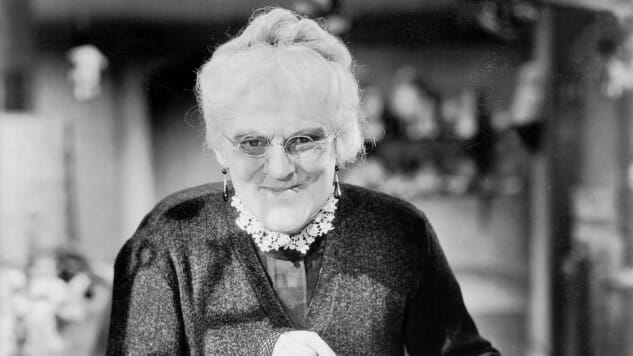
This post is part of Paste’s Century of Terror project, a countdown of the 100 best horror films of the last 100 years, culminating on Halloween. You can see the full list in the master document, which will collect each year’s individual film entry as it is posted.
The Year
Looking back on the Hollywood of yesteryear, it’s funny to see how much more quickly a supposed fad was apparently expected to run its course. Whereas a genre like the modern “superhero movie” has been going strong since the beginning of the 2000s, showing absolutely no signs of slowing down, studio executives by 1936 seemed to believe that audiences were getting fed up with all this horror and monster malarky, only five years after Dracula and Frankenstein first invigorated the genre in 1931. Obviously, anyone who thought horror was a passing novelty turned out to be wrong, but the genre now cools off for a few years, before coming roaring back at the end of the decade.
With that said, 1936 is still relatively strong in terms of volume of horror—certainly much stronger than 1937-1938 will be. It’s notable for giving us the first true sequel to Dracula in the form of the unexpected, still-confounding Dracula’s Daughter, a rare female-fronted horror feature for the era that has generated countless film essays in the years since for its nebulous lesbian overtones—themes that would reappear again and again in the 1970s, in films such as The Vampire Lovers. The year is also home to a few Karloff features, such as the Michael Curtiz-directed The Walking Dead, and another Lugosi/Karloff team-up in The Invisible Ray—both decidedly B-pictures at best.
Still, it’s a better slate than what was to come, as horror entered one of its most fallow periods in the late 1930s.
1936 Honorable Mentions: Dracula’s Daughter, The Demon Barber of Fleet Street, The Walking Dead, The Invisible Ray
The Film: The Devil Doll
Director: Tod Browning
A few years earlier into this decade, The Devil Doll would have been an entertaining dalliance that ended up in our honorable mentions, but for 1936 it’s the best option based on its weirdo novelty alone. Combining elements of crime films, science fiction and horror, it almost feels more like a 1950s sci-fi horror film—especially The Incredible Shrinking Man—than it does like a horror film from its own period.
Lionel Barrymore stars here as Paul Lavond, a man who has spent 17 years in prison for a crime he didn’t commit. Making his escape with the help of a scientist who has perfected a formula for shrinking down human beings to the size of a toy—a scientist who conveniently dies along the way, passing on his knowledge to Barrymore—Lavond decides to use his new knowledge, along with the scientist’s widow, to take revenge on those who set him up and ruined his life. And, as they say in the famous expression, revenge is a dish best served in the form of human doll murders.
The film’s modern infamy and cult status comes from the fact that in order to do this, and get close to his victims, Lavond decides to take on the disguise of an old woman—meaning that Barrymore spends the vast majority of the film in rather unconvincing drag, planting tiny accomplices in the homes of his targets, where they pose as dolls until it’s time to strike. This is absolutely as ludicrous in practice as it sounds in description, and one gets the sense that the only way the cross-dressing aspect of the film got past the Hays code is that it’s treated with total absurdity rather than any sense of sexual satisfaction.
Still, The Devil Doll is notable for its very competent effects work, essentially taking the same “miniaturization” effect seen in Pretorious’ creations in Bride of Frankenstein and making it the lynchpin of the plot. The tiny people here interact with their environments in ways that are considerably more realistic and creative than the short segment featuring miniatures in Bride, so Devil Doll does deserve credit for doing at least one thing better than one of the most beloved horror films of all time. In the end, though, Devil Doll is less a film classic and more of a quaint piece of cinematic camp, still fun to see in the context of a snarky midnight screening.
Jim Vorel is a Paste staff writer and resident horror guru. You can follow him on Twitter for more film and TV writing.